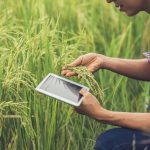The Philippines is currently a hotspot of activity with significant changes on the political and economic fronts. As the nation navigates a combination of new leadership dynamics and emerging market conditions, it’s more critical than ever to stay informed. In this article, we’ll explore the latest political shifts and economic developments shaping the lives of Filipinos today.
Major Political Shifts: Understanding the Recent Changes in Philippine Leadership and Governance
In recent months, political developments in the Philippines have made headlines around the world. The election of Ferdinand "Bongbong" Marcos Jr. in mid-2022 marked a significant turning point for the nation. Marcos Jr., the son of the late dictator Ferdinand Marcos Sr., has brought a wave of nostalgia and controversy back to the political arena, rekindling discussions about martial law and governance.
Since taking office, President Marcos Jr. has made several appointments that reflect a strategic approach towards unifying various factions within the government. His administration has prioritized stability and collaboration among different political groups, aiming for inclusivity in a politically fragmented environment.
An essential piece of the new administration’s strategy is focusing on economic recovery post-pandemic. The urgency for policies aimed at revitalizing industries, encouraging investment, and enhancing infrastructure can be seen as crucial efforts to position the Philippines for future growth.
The government has already unveiled several infrastructure projects under the “Build Better More” program, which is intended to create jobs and stimulate economic activity. These projects underscore the administration’s commitment to broadening the economic base and improving public services across the archipelago.
On the legislative front, key bills addressing issues such as digitalization, disaster preparedness, and healthcare reform have gained traction. These pieces of legislation aim to address both immediate concerns and long-term developmental goals, ultimately impacting the quality of life for Filipinos.
Marcos Jr.’s leadership style has been characterized by a blend of traditional political methods and modern approaches. This has fostered a sense of continuity within governance, aiming to reassure citizens while engaging with younger voters who are pressing for reforms and innovation.
Public sentiment plays a pivotal role in shaping governance, and recent surveys indicate varying levels of public approval for Marcos Jr.’s leadership. Understanding the dynamics of public opinion is essential as it holds the power to influence the direction of policies and political strategies.
Another focal point under the current administration has been international relations. The Philippines is navigating complex tensions in the South China Sea while maintaining strong ties with allies such as the United States. How this foreign policy evolves will significantly impact not just governance but also national security.
In light of pressing issues like climate change, the Marcos administration is placing environmental sustainability high on its agenda. Policies aimed at disaster resilience and renewable energy initiatives illustrate a growing commitment to tackle these critical global challenges.
Citizens are becoming more engaged in political processes, with grassroots movements and civic organizations advocating for transparency and accountability from the government. Public participation is crucial in ensuring that leadership remains responsive to the needs and concerns of the populace.
To summarize, the political landscape in the Philippines is in a state of transformation driven by a new wave of leadership that is working to balance tradition and innovation. As citizens continue to engage and voice their opinions, these political shifts will undoubtedly shape the nation’s future.
As the Marcos administration builds on its legacy, it’s essential to keep an eye on how these significant changes will impact the daily lives of Filipinos and the democratic fabric of the nation.
Economic Developments: Navigating the Challenges and Opportunities in the Philippine Market
Shifting gears to the economy, the Philippines is witnessing a fascinating interplay of challenges and opportunities. As the country strives for recovery after the upheavals brought on by the COVID-19 pandemic, it faces both internal and external economic pressures that demand resilience and innovation.
The pandemic disrupted many local businesses, especially in tourism and retail, fundamental sectors of the Philippine economy. However, as restrictions ease, there’s hope for revival, prompting business owners to adapt to post-pandemic realities through digital transformation and e-commerce initiatives.
The global market conditions have a significant influence on the Philippine economy. With inflation rates fluctuating and global supply chains still adjusting, local industries must maneuver through these complexities. For instance, the rise in oil prices has heightened operational costs, prompting businesses to explore alternative energy solutions.
Despite these hurdles, the Philippine economy shows promise. The country boasts a diverse economic landscape that includes agriculture, manufacturing, and the burgeoning tech sector. These elements provide a solid foundation for recovery and growth, provided that strategic investments are made.
Real estate development remains a thriving industry, with a notable shift toward integrated communities that align residential, commercial, and leisure spaces. This trend is reshaping urban landscapes and providing more opportunities for investors and homeowners alike.
Moreover, remittances from Overseas Filipino Workers (OFWs) continue to play a crucial role in bolstering household income and sustaining consumption, which drives much of the economy. The steady inflow of remittances helps stabilize the local market and create demand for various products and services.
The Bangko Sentral ng Pilipinas (BSP) is actively monitoring monetary policy to manage inflation and support sustainable growth. Interest rates are a critical tool in steering the economy, and decisions made by the BSP will affect everything from lending practices to consumer spending.
Technology and innovation are increasingly central to economic discussions. The Philippine government is supporting initiatives aimed at fostering technological advancement, creating a conducive environment for startups and tech-driven enterprises to thrive.
Higher education institutions are also adapting to these changes by offering specialized programs that align with industry needs. This aligns with the rising demand for skilled labor in areas like digital marketing, programming, and cybersecurity.
The agribusiness sector has seen renewed interest as food security becomes an increasingly pressing issue. Sustainable agricultural practices and local sourcing are becoming focal points, not only to support local farmers but also to ensure a stable food supply chain.
Entrepreneurship is gaining momentum, with a growing number of Filipinos turning to small businesses as a viable source of income. Microfinance institutions are playing a vital role in providing access to capital for these emerging entrepreneurs, fostering a spirit of resilience.
In an era of climate change, the Philippines is also exploring the potential of green technologies and sustainable practices in various industries, providing both environmental benefits and economic opportunities.
As the economy evolves, consumers are becoming more discerning, prioritizing quality and sustainability in their purchasing decisions. Companies that can align with these values are likely to gain a competitive edge in the market.
To sum it up, the Philippine economy is navigating a complex landscape characterized by challenges and exciting prospects. With a focus on innovation, sustainability, and inclusivity, the nation has a unique opportunity to emerge stronger and more resilient in the years ahead.
In conclusion, the Philippines is at a vital juncture in its history, shaped by dynamic political leadership and evolving economic conditions. Both factors will undoubtedly influence the daily lives of Filipinos and the future trajectory of the country. Staying informed about these changes is essential for understanding how to navigate this exciting yet challenging landscape. Let’s keep our eyes on how these developments unfold in the coming months!









